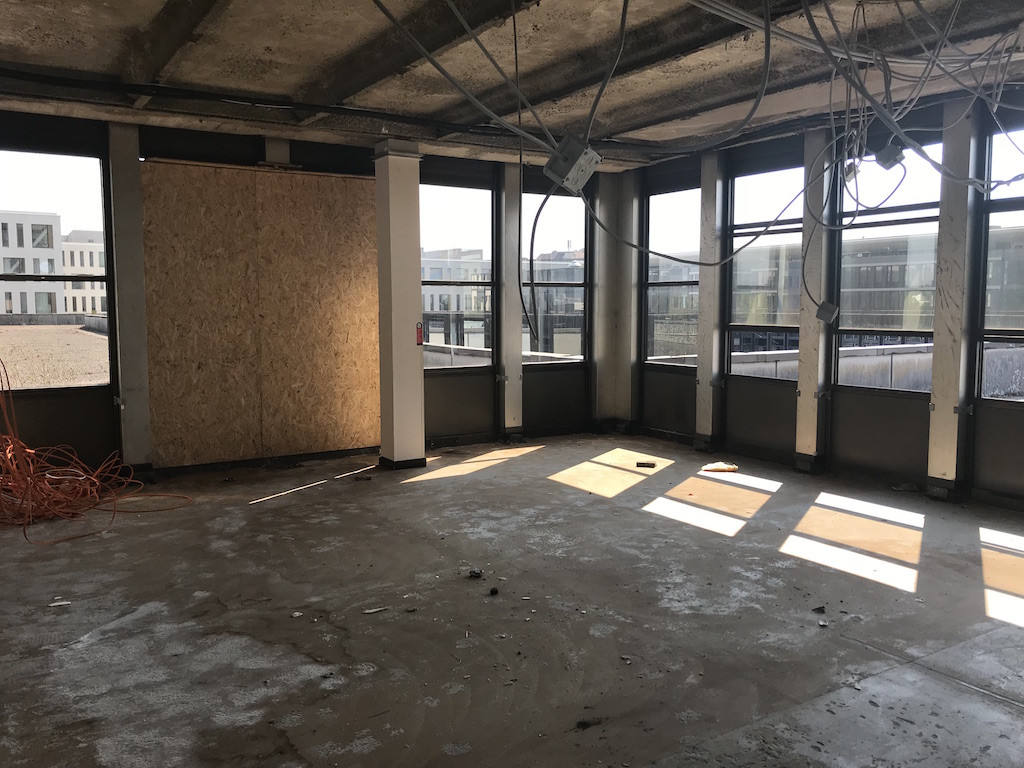Around 400 tonnes of aluminium, 150 tonnes of glass and 45 tonnes of wood removed from the skeleton of the Jean Monnet building on Kirchberg will be separated at the site. It will then be sent to various locations for recycling, secretary of state for sustainability Claude Turmes explained. He says that building material waste accounts for between 25 and 30% of all waste in Europe.
Transportation journeys for the waste building material are also be kept to a minimum. Aluminium will be smelted in the north of the grand duchy and turned into new aluminium products. Wood will be sent to a site in the south of Luxembourg. And glass will be shredded and then reused via a firm in Thionville.
Asbestos was also prevalent in the building, which was constructed in 1975 and housed up to 2,000 EC employees. Patrick Gillen, the president of Fonds du Kirchberg, which owns the land, says it will be removed under “drastic conditions” including depressurising entrance and exits, so that no asbestos dust escapes.
Luxembourg exemplary
Guillaume Dubois, the engineer in charge of the project for Schroeder Associés, says the idea is to deconstruct rather than demolish the building. The company is working together with the ministry for sustainable development and the Luxembourg Institute of Science and Technology. To ensure the project was as efficient as possible, they set up an inventory of the building materials that could be used again. Carole Lacroix of List says that Luxembourg is a leader in taking this approach to recycling demolition material. “During our preliminary study, we looked at what neighbouring countries in Europe were doing, and we found no literature corresponding to it.”
The deconstruction is expected to cost around €25 million and should be completed by the middle of 2019. Construction on the replacement Jean Monnet 2 building, at a cost of €526 million, was started in June. The new 190.000m2 building, incorporating a 24-storey tower, will be completed in 2024, though some employees will start work in phase 1 of the building in 2023.
